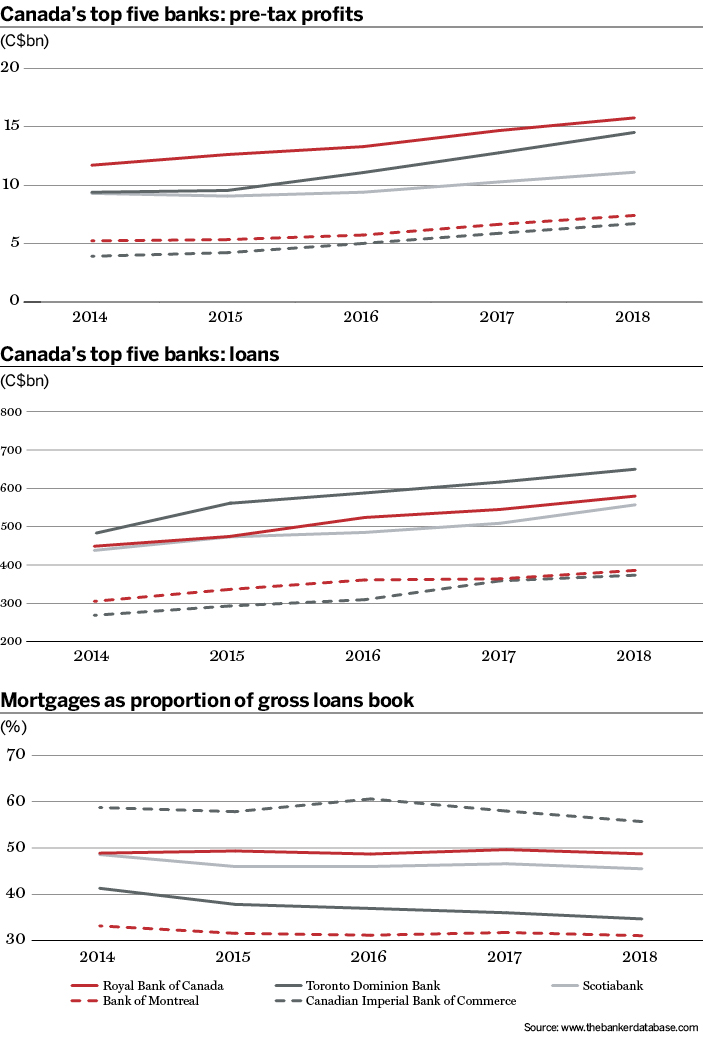Canadian banks have reported an increase in profits for yet another consecutive year, reinforcing the financial sector’s reputation as strong and stable. Together the top eight Canadian banks recorded C$60.9bn ($45.66bn) in pre-tax profits (PTP) for 2018 in the fiscal year ending October 31, a 10.1% increase year on year.
All eight experienced a growth in profits. Canadian Western Bank (CWB), in seventh place by Tier 1 capital, posted the biggest increase in PTP (16.1%), followed by fifth placed Canadian Imperial Bank of Commerce (CIBC) (14.1%) and second-placed Toronto Dominion Bank (TD) (13.7%). The country’s largest bank by Tier 1 capital, Royal Bank of Canada (RBC), saw a 7.4% rise in pre-tax profits year on year.
Return on equity (ROE), a measure of profitability, reached 16.5% for the eight banks, the highest level since 2014. RBC leads the pack, with an ROE of 19.7%, followed by National Bank of Canada (NBC) with 19.3% and CIBC with 19.1%.
All except last-placed Laurentian Bank of Canada (LBC) increased their loan books. CBW was the only bank to see a double-digit growth (12.8%), whereas Scotiabank saw an increase of 9.5% and RBC grew its loan book by 6.4%.
Residential mortgages make up a significant proportion of Canadian banks’ loan books. For example, 55.7% of CIBC’s loan book is residential mortgages, down from a high of 60.6% in 2016. RBC’s C$282.5bn in residential mortgages constitutes 48.7% of its loan book, but this has held steady over the past five years.
In 2016 and 2017, many concerns were raised around ‘overheating’ in the housing markets of Canada’s main cities, such as Toronto, Vancouver and, to a lesser extent, Montreal. However, at the beginning of 2018 the country implemented new mortgage stress-testing rules, designed to make it more difficult to get a mortgage. In addition, Bank of Canada launched its hiking campaign in mid-2017 – making three 0.25% interest rate rises in 2018 alone – which has contributed to the dampening effect.
As such, the trend is towards lower growth in Canadian residential mortgage portfolios. CIBC, for example, expanded its portfolio by just 0.01% in 2018, compared with more than 10% each year in 2016 and 2017. Only CWB saw a double-digit growth (11%) in 2018, whereas the other two smaller lenders, NBC and LBC, saw contractions in their residential mortgage loan books of 14% and 8.1%, respectively.
The Canadian banks have kept their reserves for bad debts relatively steady over the past five years. For example, RBC’s allowance as a percentage of its loan book is 0.5%, whereas TD's is 0.55% and Scotiabank's is 0.91%.








